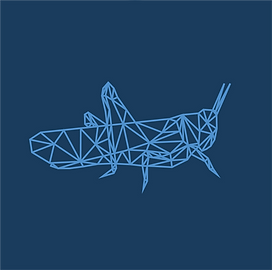Research Focus Areas
Morphological Intelligence
The complexity of animals hides an underlying potential simplicity in control. It is generally thought that because animals are capable active control that they use this to create their complex behaviors, however, dynamic locomotion’s short time scales (locust jump 30 ms) and animal’s comparatively slow nerve conduction velocities (locust 0.5-3 m/s) suggests, and in certain cases necessitates, non-traditional control strategies. The solution lies in behaviors encoded into the physical system (morphological intelligence), which can respond (>1000 m/s) much faster than neuronal based control systems or electronic ones for that matter. Initial verification of this concept has been shown in the locust’s jump, and is potentially pervasive in biological locomotion. It is also of particular importance for robots, as we are unable to replicate the performance of the energy and actuation components of animals and therefore seek to minimize them where possible in addition to this concept’s ability to potentially enhance a robot’s variability, adaptability, and redundancy.
Projects: Jumping Robot, Flying Robot
Multimodal Locomotion
The locomotion performance and mobility of animals, and therefore robots, in unstructured environments necessarily requires consideration of the diversity of locomotion modes. Additional modes are beneficial, as they are applicable to different regions of the unstructured environment and, therefore, can enhance mobility over that of increases in the existing mode’s performance. But more than that, it requires a closer look at how these modes are combined within the structure of the animal. What are the costs or trade-offs made by the animal to exhibit particular modes? A study of the vampire bat’s jumping and flying behavior lead to general design principles evolution employs to combine locomotion modes in animals. These integrated multimodal locomotion design principles tend to enhance mode cooperation and component functionality while reducing the overall number of components. This is particularly beneficial for robots, as it paves the way toward minimization of components while maintaining or increasing the locomotion modes’ performance and mobility.
Projects: Jumping/Flying Robot, Climbing Robot
Research Projects
Advanced Actuation
Electromagnetic actuation has been the mainstay of robotics since its inception. However, these tend to be heavy, inefficient, and poorly configured for certain actuation tasks. Smart materials, smart actuators, and soft actuators are very interesting as they offer another option for certain cases, however they too have a number a disadvantage. Maintaining the goal of enhancing component functionality, a design methodology for customizing magnetic springs, yielded shape memory alloy actuators with advanced functionalities, such as entire stroke control and passive mounting. Studying new actuation technologies and performance enhancing concepts is paramount to enhancing robotic mobility.
Projects: Jumping Robot, Soft Robot

Jumping Locomotion
This project is centered around enhancing the mobility of jumping robots through both advanced engineering and bioinspired design. Currently, we are focused on understanding jumping efficiency. More information to follow as the work is published.

Swarm Locomotion
This project is centered around enhancing the mobility of swarm robots through both advanced engineering and bioinspired design. Currently, we are focused on communication. More information to follow as the work is published.

Gilding Locomotion
This project is centered around enhancing the mobility of gliding robots through both advanced engineering and bioinspired design. Currently, we are focused on control. More information to follow as the work is published.

Manipulators
This project is centered around enhancing the functionality of manipulators through both advanced engineering and bioinspired design. Currently, we are focused on soft robotic grippers. More information to follow as the work is published.


